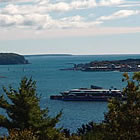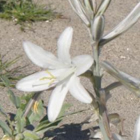Exploring on the east coast
Lynne Benjamin and her partner Fred experienced the culture and breathtaking scenery of Nova Scotia
Nova Scotia looks like Scotland, acts like Scotland and has many Scottish names but that is just the latest incarnation. Some say the present day Mi’kmaq (First Nations people) have direct lineage to the ancient Archaic Indians of 1,000 to 5,000 years ago. Also, the Vikings may have had settlements here at least 500 years before Columbus landed in North America. At various points in time, the province has been claimed by the French, Spanish and Americans.
The provincial capital, Halifax, is the gateway to the picturesque south shore. We spent most of our mainland jaunt touring along what they call the Lighthouse Trail—fishing communities, Peggy’s Cove, Lunenburg and Mahone Bay are located along this route. Everywhere we went seemed to be one Kodak moment after another.
Wonders of the east coast
Lunenburg was designated a World Heritage Site in 1995 in order to protect its unique architecture and civic design as the best example of a planned British colonial settlement in North America. Lunenburg is also noted for its ship building and when we were there, the infamous Blue Nose II was in port.
The Scarecrow Festival at Mahone Bay gave us the opportunity to experience the spirit of fun and ingenuity of the south shore. Scarecrows (mostly homemade) are everywhere—a great celebration of the fall season.
The Trans-Canada Highway goes right through the middle of Cape Breton Island from the Canso Causeway to North Sydney and the ferry over to Newfoundland. Between the first traffic light and the town of Baddeck, there is a road to Little Narrows, the Highland Village, Iona and eventually Sydney.
This short, winding road ends abruptly at the waters of a narrow canal. If you are lucky, the ferry will be sitting there waiting for you. If not, you may have to wait five or 10 minutes to let it empty on the other side and come back for you. The ferry is on a cable. It might carry up to a dozen vehicles across a stretch of water that is about as far away as three ferries strung together.
To the right is Route 223. It runs past the never-changing Little Narrows General Store (Mackenzie’s) and takes you along the shore of Bras d’Or Lake to Iona at the other end of the peninsula. There is a living history museum and cultural centre in Iona that celebrates the rich Scottish Gaelic culture and provides an apt description of the historic Highland Village and its view, the collection of buildings and true representation of days gone by.
The ferry from Iona to Grand Narrows has been replaced by a bridge but the road still follows a cow path along the shore and through the trees until you finally arrive at Sydney.
The scenic route
A must-see attraction is the Cabot Trail. However, do not take your RV over the trail; it is hilly, windy and in some places, the road is narrow. Nevertheless, the scenery is spectacular: rugged shorelines and roads that wind in and out of tree-covered hills. It is especially beautiful in the fall when the colours are changing.
Following the Margaree River through the Margaree Valley you can just imagine sheep grazing the rolling hillsides reminiscent of the Scotland of yore. The river is dotted with fishermen standing hip deep in the water while casting their lines. Eventually, the road takes you over to the Bay of St. Lawrence and through many small, colourful villages along the shore.
Just before we reached the village of Grand Etange, we noticed a small restaurant with a gathering of people, vehicles and music—what looked to us like a céilidh (pronounced “kay-lee”), which is a get-together—typically with Celtic music and dancing. Of course, we stopped.
There, on the side of the road, was what the locals called the Garden of Scarecrows. There were scarecrows depicting various political leaders and scarecrows working and playing ring-around-the-rosy while others were standing around in a big circle—there must have been close to a hundred of them. In the restaurant, we shared stories and tales with the owners, Ethel and Paul.
From the shores of the Gulf of St. Lawrence, the road meandered through the wilderness of Cape Breton National Park. Lots of wildlife—moose, bald eagles, snowshoe rabbits and harbour seals—make their home in the park. The cool Atlantic climate and landscape provide an ideal habit for a special mix of Acadian, boreal and taiga forest not found anywhere else in Canada.








